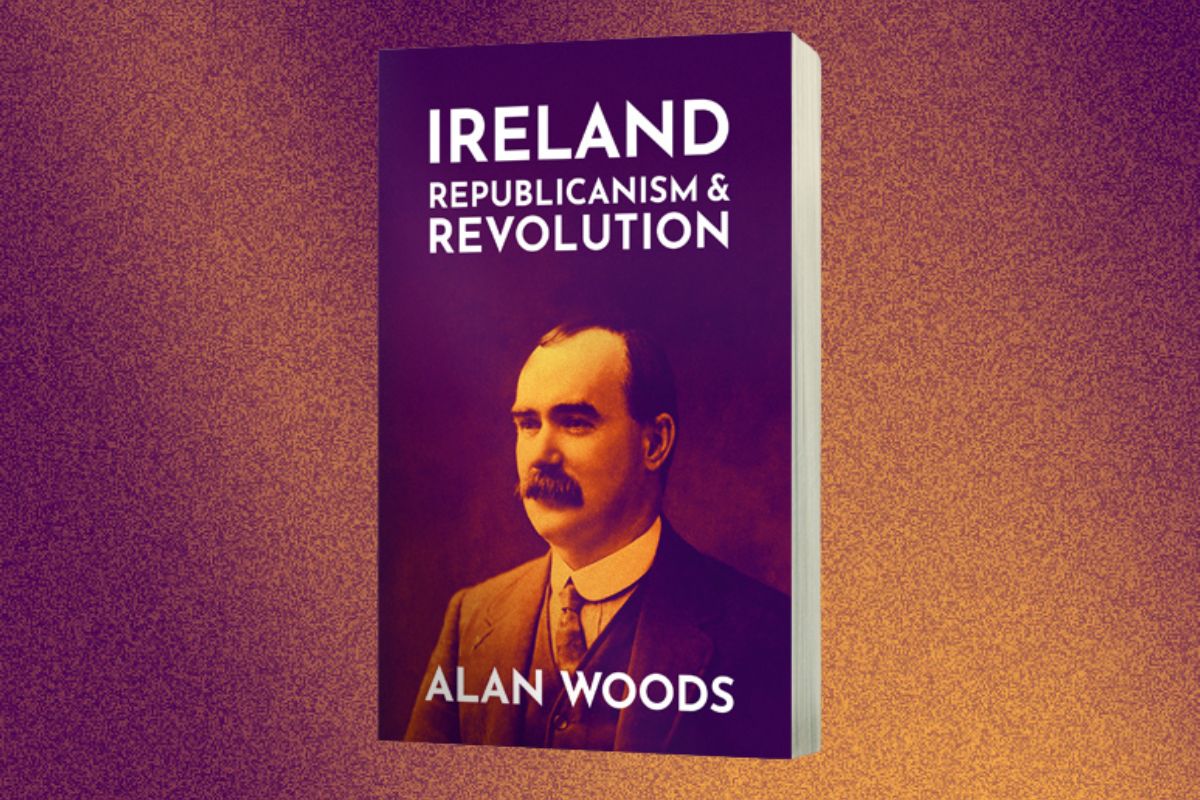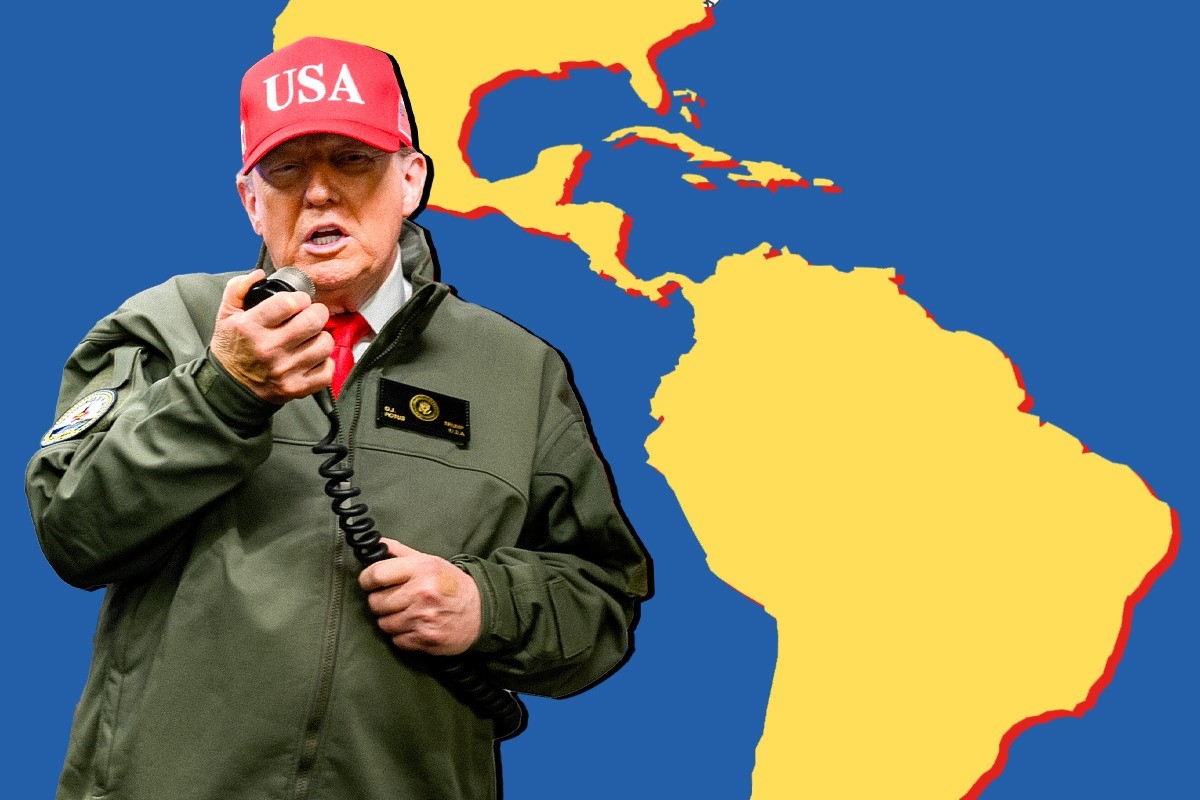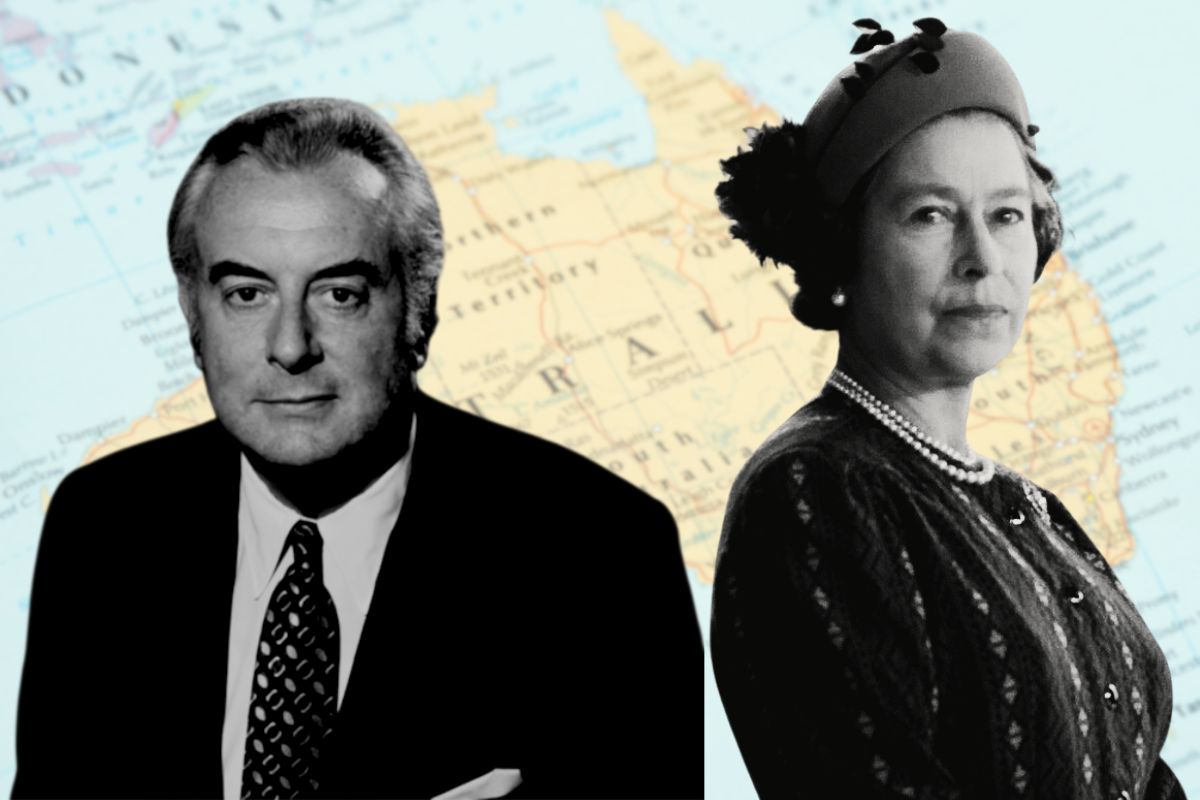Last Saturday saw the official launch of a new edition of Alan Woods’ ‘Ireland: Republicanism and Revolution’. At this inspiring event, and in the article below, Ben Curry discussed the key lessons contained within this important book.
Last weekend, on Saturday 26 November, 65 people gathered in the London Irish Centre, with another 35 connecting online, for the launch of the new edition of Alan Woods’ Ireland: Republicanism and Revolution. Comrades joined the live-streamed event from Ireland, Britain, Sweden, the USA and Canada, making this a really international gathering.
Enthusiasm was high for the highly anticipated return of this book, which has been out of print for 15 years, and is now being republished with a brand-new introduction. This mood was reflected in sales before the event and on the night itself. £550 of books and tickets were sold in advance, and a further £325 of book sales at the event.
For unavoidable reasons, Alan was unable to attend the launch in person. But he sent warm greetings to the gathering and one simple message, which was read aloud by the chair.
“None of the problems facing the working class and the youth can be solved under capitalism,” Alan explained. “This is the fundamental fact which we must grasp.”
He went on to explain how Irish history “is filled with examples of the heroism of the Irish working class, and the cowardice, duplicity, and treachery of the Irish bourgeoisie and their petty bourgeois hangers-on.”
“The last named always pose the national question in terms of just two alternatives: the so-called armed struggle on the one hand and the parliamentary road on the other. Both are equally false.”
Rather, Alan explained, it is only the mass revolutionary movement of the proletariat that can bring about a United Ireland, as part of the socialist revolution.
“In Ireland, in Britain and all over the world a new generation is beginning to move into action. It is looking for a banner, a programme and an idea. To this new generation the ideas of Marx, Lenin, Trotsky, and above all, James Connolly offer the only real guide and compass that they will need in order to find their way to the road that leads to socialism.”
Out of print since 2005, this book’s re-release with a new introduction couldn’t come at a more appropriate time as British imperialism lurches from crisis to crisis & the Union frays at the seams. A must-read for revolutionaries in Ireland, Britain and beyond. https://t.co/w8sT7FfOzW
— Ben Sea (@everythingcrash) September 23, 2022
Ben Curry, the author of this edition’s new introduction, then opened the discussion with a wide-ranging talk on Irish revolutionary history.
His talk spanned the great events of the past 225 years, that Ireland: Republicanism and Revolution delves into, in order to retrieve the vital lessons revolutionaries in Ireland, Britain, and the whole world must absorb today.
In his book launch talk, Ben discussed the first rising against the British Empire for a Republic in Ireland – that of the United Irishmen – and how this heroic movement established a tradition of class unity across the sectarian divide introduced by the British.
He went on to discuss the great class battles of the early 20th Century: the great Belfast dockers’ strike of 1907 and the Dublin lockout of 1913. And he explained how, from these mighty struggles, the Irish Citizens’ Army – the first Red Army in Europe, and the leading force in the 1916 Easter Rising – was forged under Connolly’s leadership.
Above all, Ben underlined the gigantic role of that great Marxist, James Connolly, who fought and died in the struggle for a Socialist Republic, and whose thought ran in a parallel stream to that of his greatest contemporaries in the Marxist movement: Lenin, Trotsky, and Luxemburg.
Finally, he explained how the Troubles began in the early 1970s, as the North of Ireland was plunged headlong into a pit of sectarian violence by the Frankenstein’s monster created by British imperialism: loyalist sectarianism.
He also gave a brief overview of the lessons of the period, and of the history of the Provisional IRA, why its methods fundamentally failed to bring about a United Ireland; and why the parliamentary cretinism of modern Sinn Féin is merely the reverse side of the coin of the failed methods of the armed struggle.
His talk was followed by a wide range of questions, delving into the lessons of the past – such as whether the Easter Rising had been a mistake and the attitude contemporary Marxists took to it.
Above all, the questions of attendees focussed on how the lessons of this history can be applied to today: What are the perspectives for the socialist revolution in Ireland today? What will be the end result of Sinn Féin’s present policy? And is a border poll likely, and what attitude ought revolutionaries take to one?
Attendees continued the discussion well into the evening at the venue bar, over pints of very good quality Guinness.
Order your copy of ‘Ireland: Republicanism and Revolution’ at Wellred Books today!
We had an absolutely fantastic launch event this weekend for ‘Ireland: Republicanism and Revolution’ by Alan Woods, with author of the new introduction, Ben Curry, speaking!
If you want to catch up on the talk, we will be putting up the recording on our website this week ? pic.twitter.com/Ovfpy4A9dr
— Wellred Books (@WellredBooks) November 28, 2022
“The rich always betray the poor”
Ben Curry
In 1798, the first uprising took place against British rule in favour of a Republic in Ireland, inspired by the democratic ideals of the French and American revolutions.
Members of the underground Society of United Irishmen had been preparing the rising for months. Pikes and guns had been collected. Thousands of men – Catholics and Protestants – had been organised and drilled.
But once the call to arms arrived from Dublin, the rising’s nominated commanders in Belfast first hesitated and then abandoned their positions altogether. In their absence, one brave man stepped forward to give a lead: Henry Joy McCracken.
Betrayal
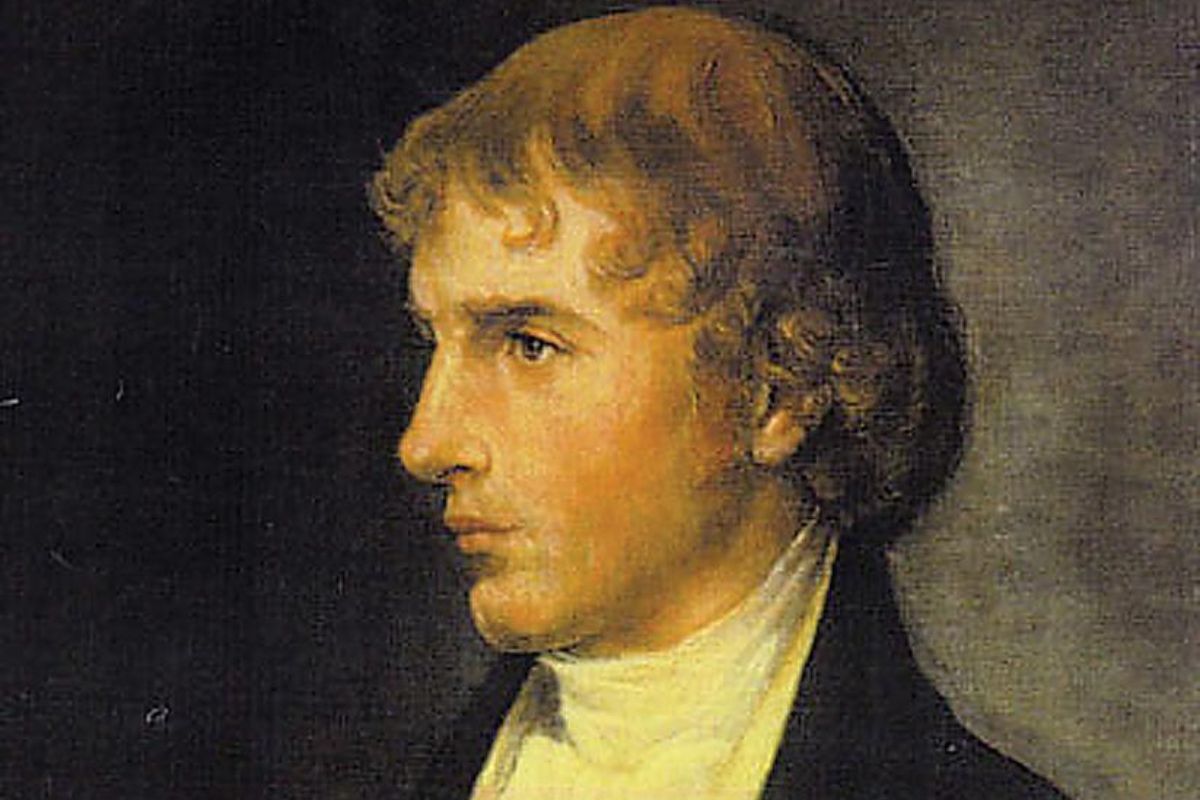
It was too late however. While the poor farmers and labourers composing the rank-and-file of the United Irishmen came out to a man, the fate of the rising had been sealed by the betrayal of the middle-class leaders in whom so much had been entrusted.
Whilst on the run, sleeping under an open sky, Henry Joy wrote the following words in a letter to his sister, the last before his capture and execution:
“You will no doubt hear a great number of stories respecting the situation of the country, its present unfortunate state is owing entirely to treachery, the rich always betray the poor.”
This lesson – that the rich have and always will betray the poor – runs like a thread through Alan Woods’ Ireland: Republicanism and Revolution, recently republished by Wellred Books after having been out of print for more than a decade.
A single act of treachery in 1798 might have been explained by the weakness of character of this or that leader. But the repeated vacillations, mistakes and betrayals of the middle-class leaders of the Irish national liberation movement since then speak to an organic tendency of that class.
By studying this rich history, Alan Woods draws us towards one inescapable conclusion: complete national liberation in Ireland can only be achieved under working-class leadership, in the struggle for a Socialist Republic.
When Henry Joy was alive, capitalism was still in its youth. Democratic movements under bourgeois and petty-bourgeois leaderships elsewhere in the world were still capable of revolutionary vigour.
Yet even at that time, the Irish capitalists formed a weak class: a cog in the gears of British capitalism. After the defeat of 1798, they only sank into an even more deplorable state.
The Easter Rising
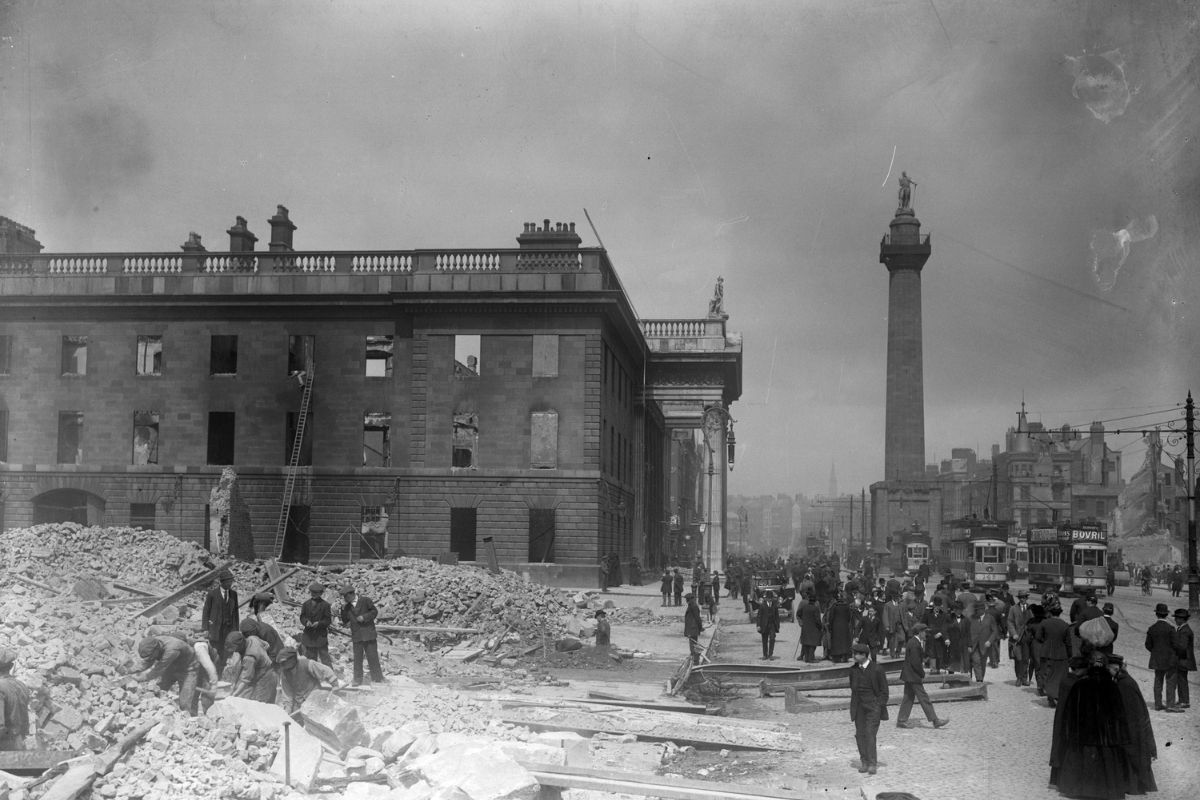
By the dawn of the twentieth century, facing a burgeoning working-class movement infused with a creed of socialist Republicanism, the bulk of the big bourgeois in Ireland had become openly counter-revolutionary. So when in Easter 1916, amidst the carnage of the First World War, a new revolutionary rising began, their stance was unmistakably hostile.
Like the rising of 1798 before it, the Easter Rising too was sabotaged by the betrayals of middle-class leaders. On the Sunday the rising had been due to begin, Eoin MacNeill, the leader of the Irish Volunteers, sent a countermanding order, massively suppressing the turnout of the rebels.
Beginning 3 May 1916, in the wake of the Easter Rising’s defeat, its commanders were executed one by one by the British Army. The last of its leaders to be murdered, the great revolutionary Marxist James Connolly, was still alive when the Irish Independent, owned by William Martin Murphy – a wealthy capitalist and former nationalist MP – published the following cry for blood:
“Weakness to such men at this stage may be fatal…Let the worst of the ringleaders be singled out and dealt with as they deserve…”
On 12 May 1916, Murphy’s wish was granted. James Connolly was strapped to a chair in the courtyard of Kilmainham Gaol and executed by firing squad.
After the crushing of the Easter Rising, the British government established a Royal Commission to enquire into the causes of the ‘rebellion’. Noteworthy was its interview with the Dublin Chamber of Commerce.
The latter responded that they were in no doubt as to the primary cause of the rising: an excessive permissiveness on the part of the authorities at Dublin Castle towards what they called ‘Larkinism’ – the wave of revolutionary trade unionism that swept Ireland before the First World War under the leadership of Jim Larkin and James Connolly.
The capitalists of Dublin identified the revolutionary blow struck against British imperialism with the revolutionary movement of the working class. They were not wrong to do so.
A revolution betrayed
As Alan Woods explains in his book, Irish Republicanism is not a monolithic movement. It has always contained competing trends.
And indeed, two distinct organisations took part in the seminal moment of Irish history, the Easter Rising of 1916: a proletarian tendency, represented by the Irish Citizens Army (ICA) – the first Red Army in Europe. And alongside it, a petty-bourgeois tendency, represented by the Irish Volunteers under the leadership of the conspiratorial Irish Republican Brotherhood (IRB).
The ICA was inspired by the clear, revolutionary ideas of James Connolly. Connolly was a giant of the Marxist movement. He had applied his sharp mind to the study of Irish history, and on the national question he arrived independently at the same position as that of Lenin.
He had polemicised against those socialists who argued that the national question should be ignored and left until after the socialist revolution. Rather, he argued that the working class must take up the leading role in the struggle, which had been abdicated by the bourgeoisie, and direct it into the same stream as the socialist revolution.
How, indeed, could the struggle against capitalism be separated from the struggle against British rule, when it was the latter that protected capitalist and landed interests in Ireland? Connolly therefore raised the banner of a Socialist Republic in Ireland as part of the fight for world socialist revolution.
The IRB, meanwhile, was a clandestine, petty-bourgeois organisation lacking clear political ideas of its own. It thus tended to fall under the influence of other tendencies.
The petty bourgeoisie as a class, being an intermediate layer in society, cannot adopt an independent class position. It will either draw behind the proletarian tendency, as IRB leaders like Pearse had drawn close to Connolly in the run up to 1916, or else it will find itself dragged in the wake of the big bourgeoisie.
That is precisely what happened after Connolly was executed, in the absence of a Bolshevik vanguard party that could carry on and deepen the influence of his ideas.
When the revolutionary War of Independence erupted in 1919, it was the influence of men like Arthur Griffith, the founder of Sinn Féin, that dominated in the Revolutionary Dáil (parliament).
Griffith had, in fact, never wanted a republic. He stood for an Irish parliament under a British monarchy. And in the pre-war period he had encouraged the British to send troops against striking Irish workers. Class instinct stands far above national sentiment for these bourgeois ‘nationalists’.
With such men at the helm, the Irish Revolution of a century ago ended in betrayal: the Anglo-Irish Treaty that partitioned Ireland in two, resulting in all of the reactionary consequences that James Connolly had predicted long before his death.
Can partition be undone?
Today, the ruling classes of Britain and Ireland can no longer ignore the question of partition. On account of Brexit, it has even become a spanner in the works of UK-US trade talks. But its reactionary legacy – of violence, sectarianism, and division within the working class – long pre-dates Brexit.
How can the crime of partition be undone? This is the question that has occupied Republicans for the past century.
The year 2005, when the first edition of this book was published, was also the year that the Provisional IRA decommissioned its weapons. Since that time, Sinn Féin has given repeated, cast-iron guarantees that it will pursue a path to a United Ireland wholly within the limits defined by the constitutional rules of the British state.
The first edition of this book was published, therefore, at a turning point, when the Provisionals were changing track – from an armed, guerrilla struggle that had failed, towards the well-worn methods of constitutional nationalism.
The second edition of this book arrives at a new turning point in the situation, a juncture that is analysed in the brand new introduction. Today, the national question is emerging with renewed vigour. But the whole constitutional framework to which Sinn Féin became wedded now lies in tatters.
Guerrillaism and constitutional nationalism – both of which have a long history in Ireland, as described in the pages of this book – seem as far removed from one another as chalk and cheese. But as Alan Woods explains, the differences relate to form, not content.
Between a purely military struggle against the state by heroic volunteers; and sending clever politicians to work wholly within the state to achieve one’s ends, there is no role for the only force which is alone capable of carrying the revolutionary struggle to victory: the organised working class.
Guerrilla struggle
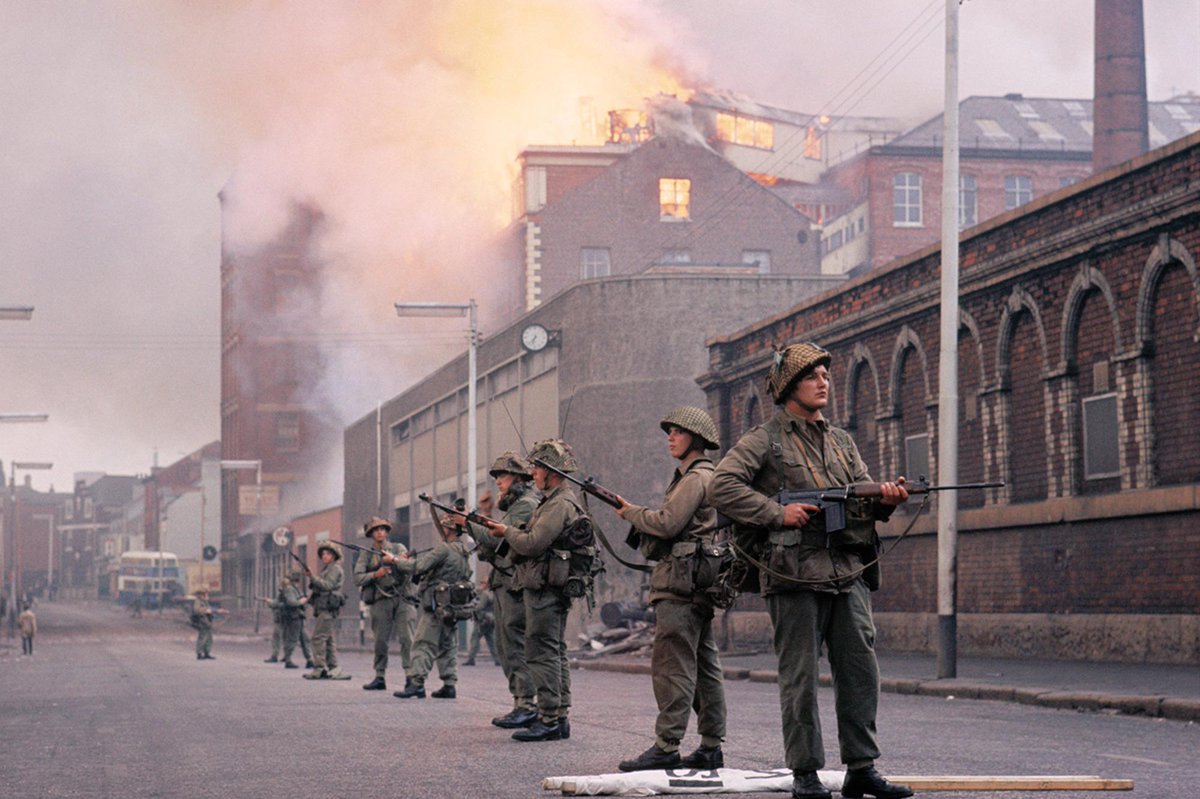
Two-and-a-half decades of guerrilla struggle on the part of the Provisional IRA and other armed Republican groups had failed to dislodge British imperialism by as much as an inch.
In fact, the Good Friday Agreement that ended the war is a mere carbon copy of the Sunningdale Agreement, which the British had placed on the table back in 1973. Twenty five years of struggle brought no new concessions from the British.
In the post-war period, before the Troubles, British imperialism had actually been looking for a way to reunify Ireland on its own terms. It had lost any interest in directly holding the North, and it already dominated the South through economic muscle alone.
But the British ruling class found to their cost that you cannot spend centuries whipping up sectarianism and then wish for it to go away when it ceases to be convenient. Sectarianism has taken on a life of its own, like Dr. Frankenstein’s monster.
It was this sectarian hydra that drove the region towards civil war in the late 1960s and early 1970s. All efforts at reforming the monstrous Orange State that partition had created were met with resistance on the part of the right-wing unionist establishment.
Meanwhile, the modest demands by Catholic youth for basic civil rights were confronted by gangs in the street, whipped up to the verge of a pogrom by the likes of Rev. Ian Paisley; and the newly formed Ulster Volunteer Force (UVF) was beginning a campaign of indiscriminately murdering Catholics.
The British had been forced to intervene with troops on the ground in 1969 – not to defend Catholics as they claimed, but to prevent catastrophic consequences for their power and prestige should the region descend into an all-out civil war.
Instead, they chose to pursue civil war on their own, controlled terms: to crush the spontaneously formed defence committees and especially the left wing within them, and later to extirpate the IRA, which involved brutalising the whole nationalist community for decades and plunging the region into a spiral of violence.
‘Labour must wait’
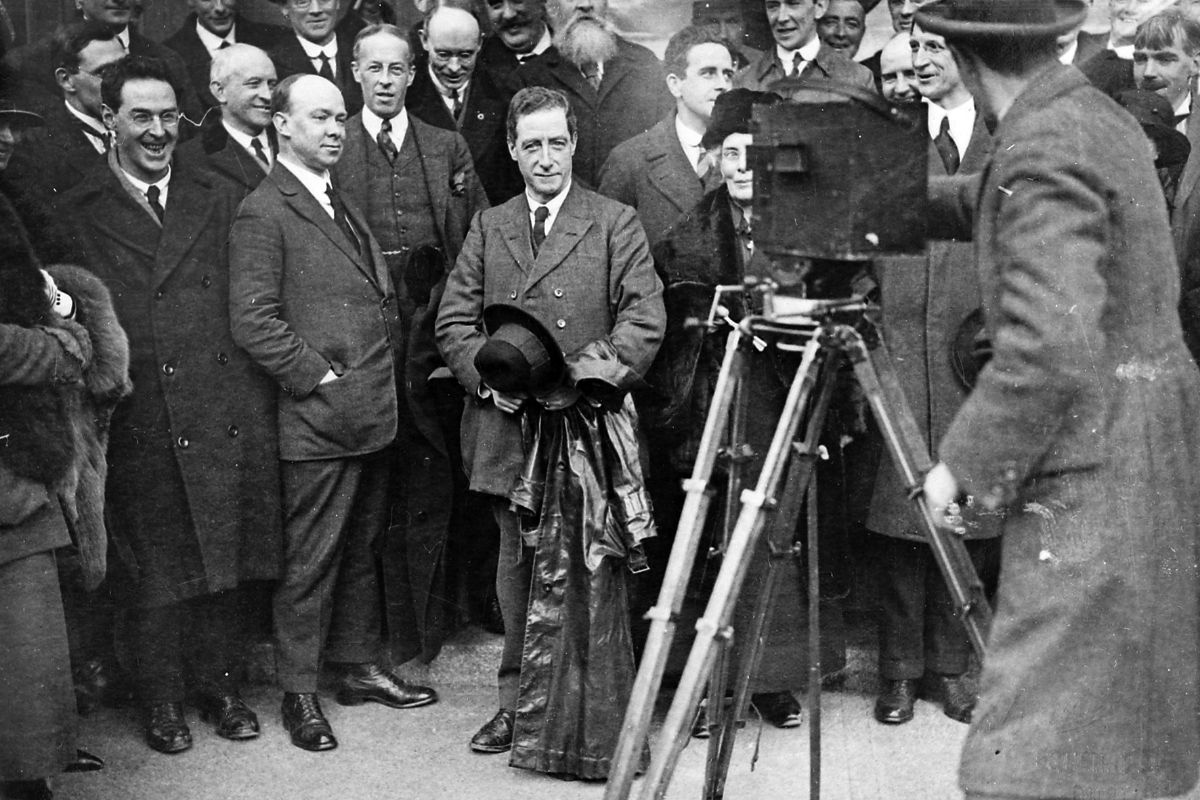
The Provisional IRA, meanwhile, merely stepped into this situation, and grew automatically because of the vacuum for self-defence of working-class Catholic communities that had been created by the inaction of the Labour leaders. As they grew, they moved from a defensive to an offensive struggle to oust British imperialism.
But their purely militaristic strategy was fundamentally mistaken. They believed that a powerful imperialist army could be defeated by armed struggle alone. It could not.
Furthermore, one million Protestants in the North could never be militarily forced into a United Ireland against their will. Only a socialist programme with a class appeal to Protestant workers could erode the barriers of sectarianism that British imperialism had erected.
For the Provo leadership, everything revolved around militarily unifying Ireland by physical force alone. The question of the fight for socialism, whatever your opinion on it, had to be left until after partition was undone.
It was a stageist approach that placed the national struggle first and the struggle for socialism a distant second, reflecting the origins of the Provos as a right-wing, petty-bourgeois trend within Republicanism in the late 1960s and early 1970s.
It was a view inimical with that of James Connolly, who explained that: “The cause of labour is the cause of Ireland, the cause of Ireland is the cause of labour. They cannot be dissevered.”
The same approach as that of the Provos was summed up by right-wing Republicans during the War of Independence of the 1920s in their mantra, “Labour must wait”. In other words: first we must settle the national struggle, then let us talk about everything else. But until then, the labour movement must obligingly step aside; and the working class must not press its demands too hard in case we alienate our uncertain allies among the middle classes.
It was a disastrous policy that cut the national movement off from a far more powerful and important ally: working-class Protestants in the North. It was a policy that sealed the fate of the Irish Revolution and made partition inevitable. It is impossible to imagine that partition can ever be undone with such a policy.
This is the principal lesson of this book – a lesson that is vital at the present turning point.
Constitutional illusions
Today, Sinn Féin is appealing above all to middle-class layers in the North who have been unsettled by Brexit.
Its whole programme for a United Ireland is premised on the idea of a united, capitalist republic, within the EU; upon the ‘economic good sense’ of such a republic, which would remain under the dominion of imperialism, only US and European imperialism instead of British.
Its method for achieving its programme is wholly constitutional, resting upon the goodwill of Westminster in granting a border poll.
The party’s success has built up constitutional illusions. But these will not survive contact with reality.
They will run into a head-on collision with a putrid capitalist establishment in Britain, which is chock-full of opportunists who could not care less for the democratic rights of the Irish people; with the old Frankenstein’s monster of loyalist sectarianism that has more-or-less killed the Good Friday Agreement; and with a parasitic ruling class in the South that is also presiding over a crisis, and that has no desire to throw open for discussion the constitutional basis of its rotten state.
The warning of this book is loud and clear: the rich will always betray the poor. The struggle for national unification in Ireland is a struggle against capitalism, and it cannot be entrusted to any other class than the working class.
As Alan Woods explains:
“Marx pointed out the most elementary truth: that the emancipation of the working class is the task of the working class, and only the working class. The Easter Rising was a glorious harbinger of what is still to come. The job was unfinished in 1916. The task now falls upon the shoulders of the new generation of workers and youth. Armed with the ideas of Marxism – the ideas of Connolly – the ultimate victory is guaranteed.”

